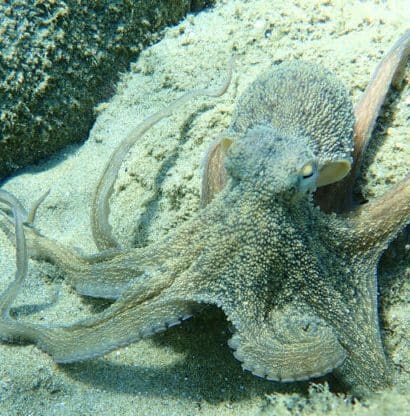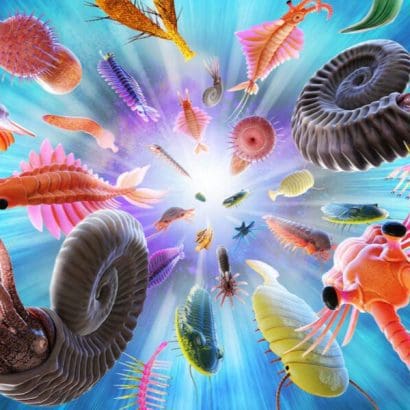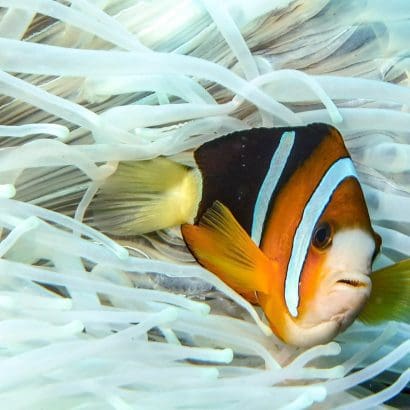
Octopuses are fascinating creatures that possess a remarkable ability to change color. Their capacity for camouflage and color alteration has captivated scientists and nature enthusiasts alike. From blending seamlessly into their surroundings to communicating with other octopuses, the ability to change color plays a crucial role in their survival and behavior. In this article, we will delve into the intriguing question, “Why can octopuses change color?” We will explore the anatomy, physiology, and mechanisms behind this incredible adaptation, shedding light on the secrets that make octopuses masters of disguise. Get ready to unravel the mysteries of octopus color-changing abilities and marvel at the wonders of nature’s ingenuity.
Contents
Anatomy and Physiology of Octopuses.
Octopuses possess a fascinating and unique anatomy that sets them apart from other marine creatures. Their physical structure and physiological adaptations contribute to their exceptional abilities, including their remarkable color-changing capabilities. Let’s explore the general aspects of the anatomy and physiology of octopuses:
Body Structure:
-
- Octopuses have soft bodies with a distinct head and elongated arms called tentacles.
- Their bodies lack a rigid skeleton, allowing them to squeeze into tight spaces and assume various shapes.
- The arms are lined with suckers that aid in gripping and manipulating objects.
Color-Changing Abilities:
-
- The skin of octopuses is equipped with specialized cells called chromatophores, which contain pigment-filled sacs.
- Chromatophores are controlled by a complex system of muscles and nerves, allowing octopuses to change the color, pattern, and texture of their skin almost instantaneously.
- These cells expand or contract to reveal or conceal pigments, creating an astonishing array of colors and patterns.
Camouflage:
-
- Octopuses use their color-changing abilities primarily for camouflage, blending seamlessly with their surroundings.
- By matching the color and texture of their environment, they can effectively hide from predators and ambush unsuspecting prey.
- The ability to alter their skin texture also aids in mimicry, allowing octopuses to resemble rocks, plants, or even other marine animals.
Communication and Displays:
-
- Octopuses use color-changing as a means of communication, displaying various patterns and hues to convey messages to conspecifics or potential mates.
- Rapid changes in color can signify aggression, fear, or courtship behavior.
- Additionally, they can display patterns and colors to intimidate predators or display submission.
Sensory Systems:
-
- Octopuses have highly developed sensory systems, including keen eyesight and a remarkable sense of touch.
- Their large, complex eyes enable them to perceive colors, shapes, and even polarized light.
- Sensory receptors in their suckers provide a remarkable sense of touch, allowing them to explore and manipulate objects with great precision.
Mechanisms of color change.
The ability of octopuses to change color is a captivating phenomenon, and understanding the mechanisms behind this remarkable adaptation provides fascinating insights into their biology. The color change in octopuses is a complex process involving various mechanisms that work together harmoniously. Let’s explore the general aspects of the mechanisms of color change in octopuses:
-
Chromatophores:
- Chromatophores are specialized pigment-containing cells located in the skin of octopuses.
- These cells can expand or contract, revealing or concealing pigments of different colors.
- Each chromatophore is controlled by radial muscles, which, when contracted or relaxed, change the size and shape of the cell, altering the color displayed.
Other Skin Cells:
-
- Besides chromatophores, octopuses also have other types of skin cells that contribute to color change.
- Leucophores reflect light and create a white or iridescent appearance.
- Iridophores contain reflective structures that produce shimmering and metallic effects.
- Papillae are small, muscular bumps on the skin that can change the texture and appearance of the skin.
Nervous System Control:
-
- The color change in octopuses is orchestrated by the central nervous system, particularly the brain and optic lobes.
- Sensory input from the eyes and other sensory organs helps detect the environment and triggers color changes.
- Nerve signals are sent to the chromatophores and other skin cells, coordinating the expansion, contraction, and activation of different pigments.
Hormonal Regulation:
-
- Hormones play a role in modulating color change in octopuses.
- For instance, hormones can affect the responsiveness of chromatophores and regulate the intensity and duration of color change.
- Hormonal changes can be triggered by external factors such as light, temperature, or social interactions.
Environmental Stimuli:
-
- Octopuses change color in response to various environmental stimuli.
- They can adjust their coloration to match the color and pattern of their surroundings, providing effective camouflage.
- Other factors such as threats, courtship displays, or territorial disputes can also elicit rapid and dramatic color changes.
Adaptation and Survival.
Adaptation is a fundamental concept in biology, and octopuses exemplify remarkable adaptations that contribute to their survival in diverse marine environments. Through a combination of physical attributes, behavioral strategies, and their ability to change color, octopuses have evolved to thrive in their habitats. Let’s explore the general aspects of adaptation and survival in octopuses:
Camouflage:
-
- Octopuses are masters of camouflage, using their color-changing abilities to blend seamlessly with their surroundings.
- By matching the color and texture of rocks, coral, or other elements in their environment, they can effectively hide from predators and potential threats.
- Camouflage also allows octopuses to approach prey undetected, enhancing their hunting success.
Mimicry:
-
- Octopuses are adept at mimicking different patterns and textures, including imitating other animals.
- Some octopuses can mimic the appearance of toxic or venomous creatures as a defense mechanism, deterring predators from attacking them.
- By imitating the movements and shapes of various marine organisms, they can also lure prey closer for successful hunting.
Intelligence and Problem-Solving Skills:
-
- Octopuses are highly intelligent creatures, displaying remarkable problem-solving abilities.
- They can navigate mazes, use tools, and exhibit complex behaviors to obtain food or escape from enclosures.
- This intelligence contributes to their survival by enabling them to adapt to changing circumstances and find innovative solutions to challenges.
Defensive Strategies:
-
- Octopuses employ various defensive strategies to ensure their survival.
- Some species have specialized defensive structures like ink sacs, which they can expel to create a cloud of ink that confuses predators and provides an opportunity to escape.
- Quick color changes and displays of aggression can also deter potential threats.
Reproduction and Parental Care:
-
- Octopuses exhibit diverse reproductive strategies, depending on the species.
- Some species produce a large number of eggs and provide no parental care, relying on high fecundity to ensure the survival of some offspring.
- In contrast, certain species invest significant energy into brooding and protecting their eggs until they hatch, increasing the chances of their offspring’s survival.
Flexibility and Versatility:
-
- Octopuses have a high degree of flexibility and versatility in their behavior.
- They can adapt their hunting techniques, habitat selection, and social interactions based on environmental conditions and available resources.
- This adaptability allows them to exploit diverse ecological niches and thrive in different marine ecosystems.
Scientific Research and Technological Applications.
Scientific research plays a crucial role in unraveling the mysteries of nature, and the study of octopuses and their color-changing abilities has attracted considerable scientific interest. Through extensive research, scientists have gained valuable insights into the mechanisms behind octopuses’ remarkable color-changing capabilities. Additionally, these findings have paved the way for various technological applications. Let’s explore the general aspects of scientific research and technological applications related to octopuses’ color change:
Understanding the Mechanisms:
-
- Scientists have conducted in-depth studies to understand the intricate mechanisms that underlie octopuses’ color-changing abilities.
- By investigating the physiology, biochemistry, and neural control systems involved, researchers have revealed the complex interplay between chromatophores, skin cells, nerves, and hormones.
- This understanding has enhanced our knowledge of how such rapid and precise color changes are achieved.
Biomimicry:
-
- Octopuses’ remarkable ability to change color has inspired researchers to develop innovative technologies through biomimicry.
- Scientists have studied the structure and function of octopuses’ chromatophores and iridophores to create new materials that can change color or reflect light in a controlled manner.
- Applications include adaptive camouflage materials, smart textiles, and responsive displays, with potential uses in areas such as fashion, military, and advertising.
Robotics and Soft Robotics:
-
- Octopuses’ unique anatomy and movement patterns have influenced the development of robotic systems, particularly in the field of soft robotics.
- Soft robots aim to mimic the flexibility, dexterity, and adaptability of octopuses, allowing them to navigate complex environments and perform delicate tasks.
- The understanding of octopuses’ color-changing abilities has also inspired the development of camouflage technologies in robotic systems.
Environmental Monitoring:
-
- The study of octopuses and their color-changing abilities has practical applications in environmental monitoring and conservation efforts.
- By analyzing the color changes in octopuses in response to environmental factors such as temperature, water quality, or pollution, researchers can use them as bioindicators to assess ecosystem health.
- Monitoring the behavior and color changes of octopuses can provide valuable insights into the impacts of environmental changes on marine ecosystems.
Pharmacological and Medical Research:
-
- Octopuses produce a range of compounds and toxins that have potential applications in pharmacology and medical research.
- Scientists study the chemical composition and properties of these substances, which may have antimicrobial, analgesic, or anticancer properties.
- Octopuses’ color-changing abilities also offer insights into the development of innovative therapies involving light-responsive drugs or photodynamic therapy.
the fascinating adaptation of octopuses to change color.
n conclusion, the fascinating adaptation of octopuses to change color is a remarkable feat of nature. Through their ability to rapidly and precisely alter their skin color and pattern, octopuses demonstrate an extraordinary level of adaptability and survival strategy. This incredible adaptation allows them to blend seamlessly with their surroundings, communicate with other octopuses, and effectively hide from predators or ambush unsuspecting prey.
The intricate mechanisms behind octopuses’ color-changing abilities involve specialized pigment-containing cells, neural control systems, and environmental stimuli. By expanding or contracting their chromatophores, octopuses can create a wide range of colors and patterns, allowing them to camouflage themselves or convey messages to conspecifics. The neural control of these color changes showcases the complexity and sophistication of their nervous system.


